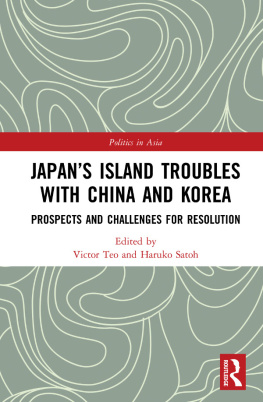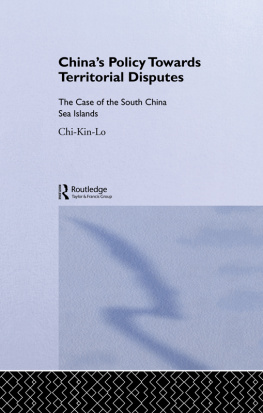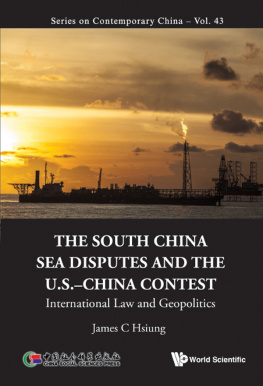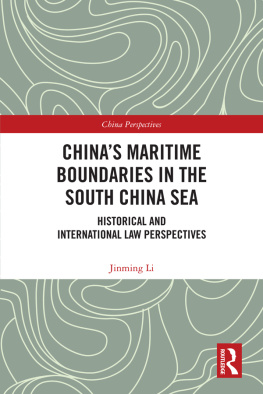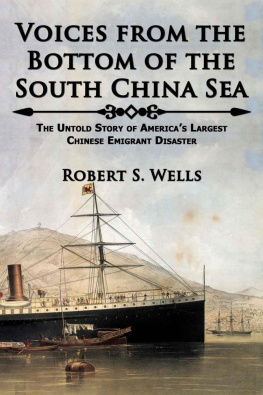Rethinking South China Sea Disputes
The proposed book draws on the ongoing South China Sea dispute, and the multifaceted challenges wrought by the South China Sea issue that requires an interdisciplinary perspective. It employs legal-analytical methods to emphasize the nuances of the role and interpretation of international law and treaties by China in different periods, while taking into account policy and strategic concerns, which generally cast great sways in decision-making. The reintroduction of interdisciplinary concerns straddling law and history illustrates that the historical dimension, which has long been neglected, is an emerging concern posing looming dangers that may unexpectedly radicalize the friction. Contributing to debunking the mystique wrought by confrontations between a historical and a law-dominated perspective, these perspectives are supported by a more nuanced analytical framework, featuring theoretical concerns with a tinge of practicality. The South China Sea Dispute aims to unveil a nuanced evolution of the issue with a confluence of inter-temporal law, policy and maritime practices in the South China Sea.
Katherine Hui-Yi Tseng is a research associate at the East Asian Institute, National University of Singapore.
Routledge Studies in Asian Law
Asian Law in Disasters
Towards a Human-Centered Recovery
Edited by Yuka Kaneko, Katsumi Matsuoka And Toshihisa Toyoda
Judicial Review of Elections in Asia
Edited by Po Jen Yap
Rethinking South China Sea Disputes
The Untold Dimensions and Great Expectations
Katherine Hui-Yi Tseng
First published 2017
by Routledge
2 Park Square, Milton Park, Abingdon, Oxon OX14 4RN
and by Routledge
711 Third Avenue, New York, NY 10017
Routledge is an imprint of the Taylor & Francis Group, an informa business
2017 Katherine Hui-Yi Tseng
The right of the Katherine Hui-Yi Tseng to be identified as author of this work has been asserted by her in accordance with sections 77 and 78 of the Copyright, Designs and Patents Act 1988.
All rights reserved. No part of this book may be reprinted or reproduced or utilised in any form or by any electronic, mechanical, or other means, now known or hereafter invented, including photocopying and recording, or in any information storage or retrieval system, without permission in writing from the publishers.
Trademark notice: Product or corporate names may be trademarks or registered trademarks, and are used only for identification and explanation without intent to infringe.
British Library Cataloguing in Publication Data
A catalogue record for this book is available from the British Library
Library of Congress Cataloging in Publication Data
A catalog record for this book has been requested
ISBN: 978-1-138-94272-1 (hbk)
ISBN: 978-1-315-67297-7 (ebk)
Typeset in Galliard
by Apex CoVantage, LLC
The general perception is that the story in the South China Sea began when the Chinese government (Republican government, Taiwan) drew the dash-line map in 1947. The region then experienced several eventful decades, and an environment inducive to economic and political development only emerged in the 1990s. Having survived the financial crisis that struck hard in late 1990s, the region was confronted with another challenge, the South China Sea dispute. Before it gradually surfaced China (both Chinese governments across the Taiwan Strait, the Peoples Republic and the Republic of China) was involved in couples of events, confronting Vietnam in the Paracel Islands in 1974 and Mischief Reef in 1995. Maritime skirmishes drew an inscrutable veil on these remote, barren and uninhabitable rocks spread across the South China Sea. In particular, the rather under-developed-ness of naval capability of coastal countries largely hollowed out their South China Sea claims. Without enough naval resources, their claims could be fortified, let alone implemented in a meaningful way. Yet, amid the growing tension, in the beginning of the twenty-first century, China and ASEAN countries for the first time laid down their projections to a peaceful South China Sea in a document, the Declaration of Conduct. While vowing to seek peaceful resolutions, these outlooks remain lip service that is hortatory, waiting for political will and real action.
It is a long and discursive path to trace the development of the South China Sea issue. Yet the South China Sea is often portrayed as a source of potential armed conflict, most often directly between China and Southeast Asian claimant states but also indirectly as a result of intricate military alliances with the worlds major and emerging powers in a bid to maintain strategic influence and control access to the worlds busiest sea lanes. A recent dispute on Scarborough Shoal in 2012, and the ongoing arbitration initiated in 2013 illustrate well the perception that confrontation, of all kinds, lies just around the corner. Despite intricate political considerations, the essence of these disputes focused superficially on resource competition. What goes unnoticed is actually confrontation between different sets of values underlying these conflicts, which have lingered into the twenty-first century. It is this theme, more accurately prescribed as re-examination of inter-temporal law and practices in maritime affairs in East and Southeast Asia, that plays a central role in framing discussions in this project.
This volume therefore includes South China Sea crises which are protracted or seen largely as routine in a countrys political landscape that actually illustrates a far more complex picture. The reintroduction of interdisciplinary concerns straddling law and history illustrates that historical dimension, which has long been neglected, but is an emerging concern, with looming dangers that may unexpectedly radicalize the friction. Hard facts aside, this study also attempts to propose new concepts for solutions from a pragmatist point of view. Stemming from traditional and historical maritime practices in this region which have largely been marginalized due to the overwhelming expansion of western international law, new proposals aim not only to break current the stalemate, but to revive these oriental values by reintroducing local and traditional maritime practices. These can fine-tune the contemporary legal regime so that disputants interests can be better addressed.
The book draws attention to the ongoing South China Sea dispute, and the entailed challenges which are multifaceted and thus require an interdisciplinary perspective. It employs multiple analytical methods straddling various subjects, such as the role of international law and its implications in different periods, while taking into accounts policy and strategic concerns that greatly influence decision-making. Also, attention will be drawn to factual and historical episodes to see how the concept of maritime defence, maritime boundary and limitation and marine affairs management took root in the development of contemporary China and Southeast Asia.
It is with these understandings that in the second part of this book, new proposals are attempted for practical resolutions. The concept of a jurisdiction right upon maritime spaces is proposed, mainly addressing the maintenance of maritime security as the provision of public goods by exercising a jurisdiction right on the great swathes of waters in the South China Sea. By drawing reference to conventional maritime practices and territorial concepts with a tinge of Asian tradition, this jurisdiction right is to draw the attention of all stakeholders on order maintenance and security provision, a goal which nevertheless has long been neglected and overshadowed by sovereignty disputes and resource exploitation. Yet the concept is not to be exercised at the cost of disregard or denunciation of the Law of the Sea regime. Rather, it could only be justified and upheld on the basis of observing the established regime and prescriptions of Exclusive Economic Zone in the Law of the Sea Convention. In this respect, a better mode of operation stems from regional cooperation that can more comprehensively accommodate Association of Southeast Asian Nations (ASEAN) claimant countries and China, with a security focus and instrument of police power on the sea.



